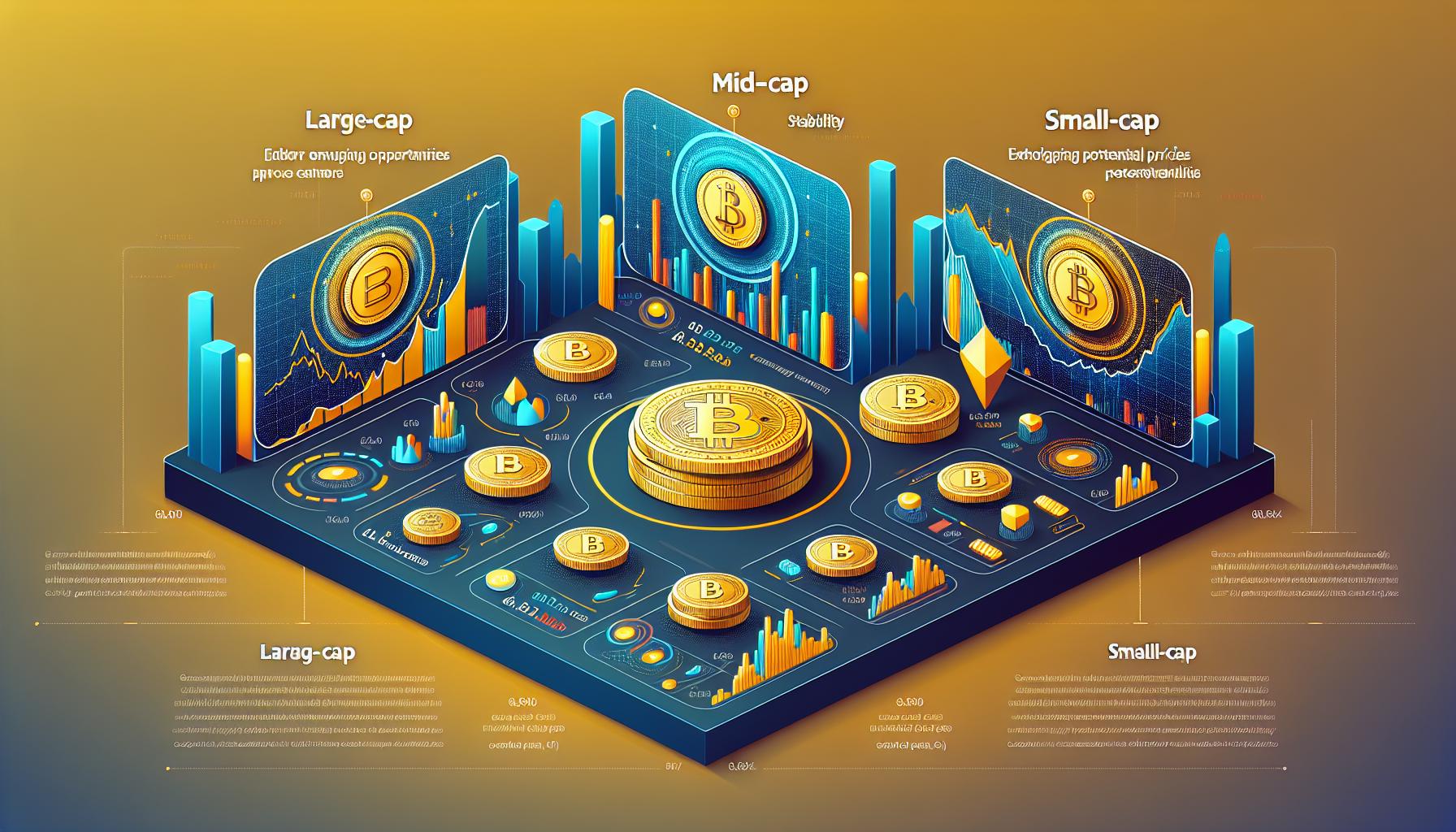Understanding the Three Categories of Crypto Market Cap
The crypto market is a vast and dynamic space, comprising a multitude of cryptocurrencies each with its own unique characteristics and potential. To better understand this landscape, crypto market cap can be divided into three categories: large-cap, mid-cap, and small-cap cryptocurrencies.
Exploring Large-Cap Cryptocurrencies and Their Significance
Large-cap cryptocurrencies, with market caps exceeding $10 billion, are the giants of the crypto world. Bitcoin and Ethereum, the two most well-known cryptocurrencies, fall into this category. These projects have stood the test of time and have established themselves as the pillars of the crypto market.
Large-cap cryptocurrencies offer stability and liquidity. They are supported by robust developer communities and have proven track records. Their market caps are a testament to the widespread adoption and investor trust they have garnered. Additionally, large-cap cryptocurrencies often serve as a gateway for new investors, providing them with a familiar entry point into the crypto market.
Mid-Cap Cryptocurrencies: Emerging Opportunities in the Market
Mid-cap cryptocurrencies bridge the gap between large-cap and small-cap projects. They have market caps ranging from $1 billion to $10 billion. These cryptocurrencies are often newer or less established compared to their large-cap counterparts, but they show promising potential for growth.
Mid-cap cryptocurrencies offer investors the opportunity to get in on the ground floor of emerging projects. These projects might have innovative technologies, unique features, or strong partnerships that hint at their future success. By investing in mid-cap cryptocurrencies, individuals can potentially benefit from significant price appreciation as these projects gain traction and increase their market share.
Unleashing the Potential of Small-Cap Cryptocurrencies
Small-cap cryptocurrencies, with market caps below $1 billion, represent the more nascent and speculative side of the crypto market. These projects are often in the early stages of development, with less established track records. However, they can be ripe with potential for those willing to take on more risk.
Investing in small-cap cryptocurrencies can be likened to finding hidden gems. These projects may have unique and disruptive technologies, but they are also accompanied by a higher level of uncertainty. The potential for massive returns can be alluring, but investors must exercise caution and conduct thorough research before allocating capital to small-cap projects.
Evaluating Market Cap: A Reference Point for Crypto Investors
While market cap is a simple and intuitive metric to compare cryptocurrencies, it should not be the sole factor in decision-making. Other metrics such as trading volume, liquidity, fully diluted valuation, and fundamental analysis are crucial for a comprehensive evaluation.
Price swings and the tokenomics of a cryptocurrency’s supply can sometimes inflate market cap, making it an imperfect point of comparison. Therefore, investors should consider market cap alongside other metrics to gain a better understanding of a project’s value and potential.
Ultimately, market cap provides a reference point for crypto investors to assess the relative size and popularity of different cryptocurrencies. It allows them to gauge the current state of the crypto market and make more informed investment decisions. By considering market cap alongside other relevant metrics, investors can navigate the crypto landscape with greater confidence and insight.
Analyst comment
Neutral news.
As an analyst, the market is likely to see continued growth and diversification as investors explore different categories of cryptocurrencies. Large-cap cryptocurrencies will maintain their stability and liquidity, mid-cap cryptocurrencies offer potential for growth, and small-cap cryptocurrencies present opportunities for higher returns but also higher risk. Investors should consider market cap along with other metrics to make informed investment decisions.













